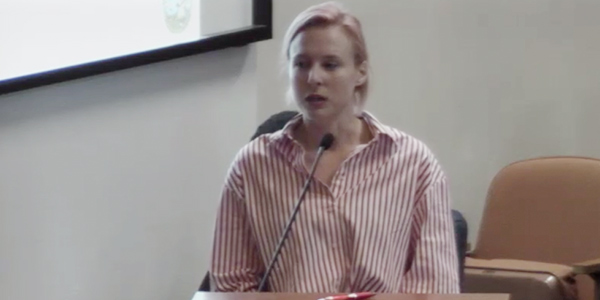By Robert Mullin
The California Public Utilities Commission (CPUC) on Thursday voted to examine its rules allowing the state’s investor-owned utilities to de-energize power lines in cases of dangerous wildfire conditions “that threaten life or property.”
The practice of de-energization will get a dedicated proceeding, separate from another rulemaking effort set out in Senate Bill 901 to address utility wildfire mitigation. De-energization will be discussed in the SB901 proceeding as one of a broader set of fire prevention measures.
“We can’t not act” on the de-energization issue, Commissioner Carla Peterman said during the Thursday voting meeting, her last with the commission. De-energization “is an option we don’t want to exercise often, but we do want the option to exercise.”
Commissioner Cliff Rechtschaffen said the issue was “worthy” of its own proceeding because de-energizing a line is a “significant event [with] significant consequences.”
“I support having this as a separate proceeding. … It is a requirement as part of the wildfire mitigation plans that the utilities now have to submit yearly that they include their de-energization protocols,” Rechtschaffen said. “[CPUC] President [Michael] Picker and I are the assigned commissioners partnered on the wildfire safety plans, and we’re committed to making sure that this proceeding is closely coordinated with that proceeding as we go forward.”
Proactive
The CPUC adopted the de-energization rules in July in response to the growing threat of wildfires throughout the state, especially in the expansive Pacific Gas and Electric and Southern California Edison service areas. Regulations around “proactive” shutoffs had previously applied only to San Diego Gas & Electric, which serves a historically highly fire-prone area.
“Since then, the topic of proactive power shutoff has reached a lot of people and has become a [hot] point of discussion,” CPUC Director of Safety and Enforcement Elizaveta Malashenko told the commission.
Among other mandates, the July rules require all IOUs to notify customers before de-energizing facilities and report to the commission after the fact (Res ERSB-8).
But Malashenko noted that industry stakeholders and members of the public have raised “a range of concerns” about the program, and that utilities are increasingly “proactively de-energizing” their lines. (See Fire Season Becomes Blackout Time in California.)
“In my mind, the type of issues that would come up in [this] rulemaking as related to de-energization is how much the utilities should be using that as a tool, as opposed to mitigating wildfires in other ways, such as introducing coated conductors or undergrounding lines, or increasing their ability to detect faults faster, and things like that,” she said.
A CPUC staff report on the new rulemaking indicates the proceeding will focus on:
- Examining conditions under which planned de‑energization is practiced;
- Developing best practices and ensuring an orderly and effective set of criteria for evaluating de‑energization programs;
- Ensuring electric utilities coordinate with state and local level first responders, and align their systems with the Standardized Emergency Management System framework;
- Reducing the impact of de‑energization on vulnerable populations;
- Examining ways to reduce the need for de‑energization;
- Ensuring effective notice to affected stakeholders of possible de‑energization and follow‑up notice of actual de‑energization; and
- Ensuring consistency in notices of and reporting of de-energization events.
Digitize the Landscape
During the meeting, Picker emphasized the importance of learning from SDG&E’s experience from de-energization — without leaning too heavily on it.
“Utilities have always de-energized,” Picker said. “We have so far required them to plan a little ahead and to provide notification, but what could we learn from San Diego? What should be applied elsewhere? And how do we know what will work in other parts of the state?”
Picker pointed out that in order to avoid de-energizing lines, SDG&E “digitized the landscape” in its service territory.
“They put sensors in a number of places,” he continued. “They put weather monitors, wind monitors, moisture monitors and cameras in places you wouldn’t expect to see that. They began to collect information. They began to look carefully at very granular conditions in specific parts of their service territory at a much finer level than has ever been modeled before.”
Picker said SDG&E over time developed “a much finer sense of where and when to de-energize, and what were the consequences.” But he also acknowledged that SDG&E has a much smaller service territory than either PG&E and SCE.
“When you begin to look at the service territories of the other regulated utilities … we may be able to expedite their processes, but they’re still going to have to go through that data-monitoring, data collection, analysis, modeling and eventual testing process,” Picker said.
“I want to be honest about what we’ll be able to achieve. I don’t think we’ll have a perfect set of rules right away.”







